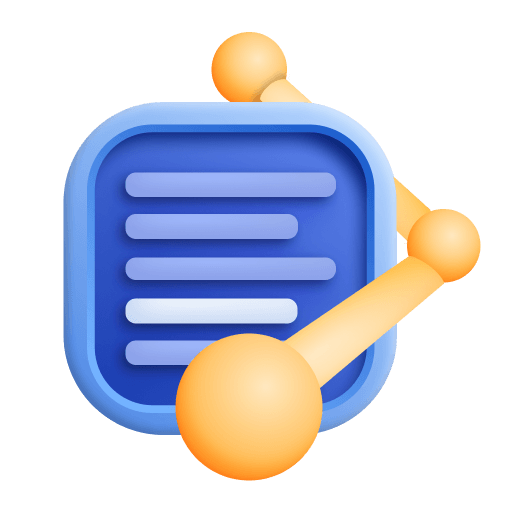Instrument your Elixir application with OpenTelemetry
- Latest Dynatrace
- How-to guide
- 4-min read
- Published Apr 20, 2023
This walkthrough shows how to add observability to your Elixir application using the OpenTelemetry Elixir libraries and tools.
| Feature | Supported |
|---|---|
| Automatic instrumentation | No |
| Traces | Yes |
| Metrics | No |
| Logs | No |
Prerequisites
- Dynatrace version 1.222+
- For tracing, W3C Trace Context is enabled
- Go to Settings > Preferences > OneAgent features.
- Turn on Send W3C Trace Context HTTP headers.
 Get the Dynatrace access details
Get the Dynatrace access details
Determine the API base URL
For details on how to assemble the base OTLP endpoint URL, see Dynatrace OTLP API endpoints. The URL should end in /api/v2/otlp.
Get API access token
The access token for ingesting traces, logs, and metrics can be generated under Access Tokens.
Dynatrace OTLP API endpoints has more details on the format and the necessary access scopes.
 Set up OpenTelemetry
Set up OpenTelemetry
-
Add the current versions of the following dependencies to
mix.exs.defp deps do[# Add any additional dependancies here{:httpoison, version: :latest},{:plug_cowboy, version: :latest},{:jason, version: :latest},{:plug, version: :latest},{:opentelemetry_exporter, version: :latest},{:opentelemetry_api, version: :latest},{:opentelemetry, version: :latest}]end -
Add a
releasesection to the application definition inmix.exs.releases: [<project_name>: [version: "<project_version>",applications: [opentelemetry_exporter: :permanent, opentelemetry: :temporary]]] -
Enable the context propagation dependencies with the following line in
runtime.exs.text_map_propagators: [:baggage, :trace_context], -
Add the following configuration to
config/runtime.exsand replace[URL]and[TOKEN]with the respective values for the Dynatrace URL and access token.import Configconfig :opentelemetry,resource: [service: %{name: "elixir-quickstart", version: "1.0.1"}], #TODO Replace with the name and version of your applicationspan_processor: :batch,traces_exporter: :otlp,# Add your text map propagator from previous step hereresource_detectors: [:otel_resource_app_env,:otel_resource_env_var,ExtraMetadata]config :opentelemetry_exporter,otlp_protocol: :http_protobuf,otlp_traces_endpoint: "[URL]", #TODO Replace [URL] to your SaaS/Managed URL as mentioned in the next stepotlp_traces_headers: [{"Authorization", "Api-Token [TOKEN]"}] #TODO Replace [TOKEN] with your API Token as mentioned in the next step -
Save the following code in
lib/extra_metadata.ex.defmodule ExtraMetadata do@behaviour :otel_resource_detectordef get_resource(_) dometadata = read_file("/var/lib/dynatrace/enrichment/dt_metadata.properties") |> unwrap_linesfile_path = read_file("dt_metadata_e617c525669e072eebe3d0f08212e8f2.properties") |> unwrap_linesmetadata2 = read_file(file_path) |> unwrap_linesattributes = get_attributes(Enum.concat(metadata, metadata2))metadata3 = read_file("/var/lib/dynatrace/enrichment/dt_host_metadata.properties") |> unwrap_linesattributes = get_attributes(Enum.concat(metadata, metadata2) ++ metadata3):otel_resource.create(attributes)enddefp unwrap_lines({:ok, metadata}), do: metadatadefp unwrap_lines({:error, _}), do: []defp read_file(file_name) dotry do{:ok, String.split(File.read!(file_name), "\n")}rescueFile.Error ->{:error, "File does not exist, safe to continue"}endenddefp get_attributes(metadata) doEnum.map(metadata, fn(line) ->if String.length(line) > 0 do[key, value] = String.split(line, "="){key, value}else{:error, "EOF"}endend)endendThe file read operations, parsing the
dt_metadatafiles in the example code, attempt to read the OneAgent data files to enrich the OTLP request and ensure that all relevant topology information is available within Dynatrace.
 Instrument your application
Instrument your application
Add tracing
Spans are started with the macro with_span and accept an optional list of span attributes, as well as the code block for this span. The span automatically finishes when the code block returns.
require OpenTelemetry.Tracer, as: Tracerdef hello doTracer.with_span "my-span", %{attributes: [{<<"my-key-1">>, <<"my-value-1">>}]} do #TODO add attributes at span creationTracer.set_attributes([{"another-key-1", "another-value-1"}]) #TODO add attributes after span creation# Your code goes hereendend
Collect metrics
No example yet, as OpenTelemetry for Elixir does not have stable support for metrics yet.
Connect logs
No example yet, as OpenTelemetry for Elixir does not have stable support for logs yet.
Depending on the status of the OpenTelemetry SDK, the pre-release version may nonetheless already allow the ingestion of your logs.
Ensure context propagation Optional
Context propagation is particularly important when network calls (for example, REST) are involved.
Extracting the context when receiving a request
To extract information on an existing context, we pass the headers to the otel_propagator_text_map.extract function, which parses the context information provided by the headers and sets the current context based on that.
# Extract headers:otel_propagator_text_map.extract(conn.req_headers)span_ctx = OpenTelemetry.Tracer.start_span(<<"span-name">>)ctx = OpenTelemetry.Ctx.get_current()task = Task.async(fn ->OpenTelemetry.Ctx.attach(ctx)OpenTelemetry.Tracer.set_current_span(span_ctx)# Do work hereOpenTelemetry.Tracer.end_span(span_ctx)end)
Injecting the context when sending requests
The following example uses otel_propagator_text_map:inject to provide the HTTP headers (necessary for context propagation) in merged_headers. The headers are then passed to HTTPoison.get, which allows the receiving endpoint to continue the trace with the provided information.
OpenTelemetry.Tracer.with_span "span-name" do# ...# do work here# ...headers = [{"content-type", "application/json"}, {"X-Custom-Header", "some-value"}]merged_headers = :otel_propagator_text_map.inject(headers)case HTTPoison.get(URL, merged_headers, []) do{:ok, res} -> IO.puts("Response: #{inspect(res)}"){:error, _} -> raise "request failed"endend
 Configure data capture to meet privacy requirements Optional
Configure data capture to meet privacy requirements Optional
While Dynatrace automatically captures all OpenTelemetry attributes, only attribute values specified in the allowlist are stored and displayed in the Dynatrace web UI. This prevents accidental storage of personal data, so you can meet your privacy requirements and control the amount of monitoring data stored.
To view your custom attributes, you need to allow them in the Dynatrace web UI first. To learn how to configure attribute storage and masking, see Attribute redaction.
 Verify data ingestion into Dynatrace
Verify data ingestion into Dynatrace
Once you have finished the instrumentation of your application, perform a couple of test actions to create and send demo traces, metrics, and logs and verify that they were correctly ingested into Dynatrace.
To do that for traces, go to Distributed Tracing (previous Dynatrace) or 
For metrics and logs, go to Metrics or Logs (previous Dynatrace) or  Logs & Events Classic.
Logs & Events Classic.